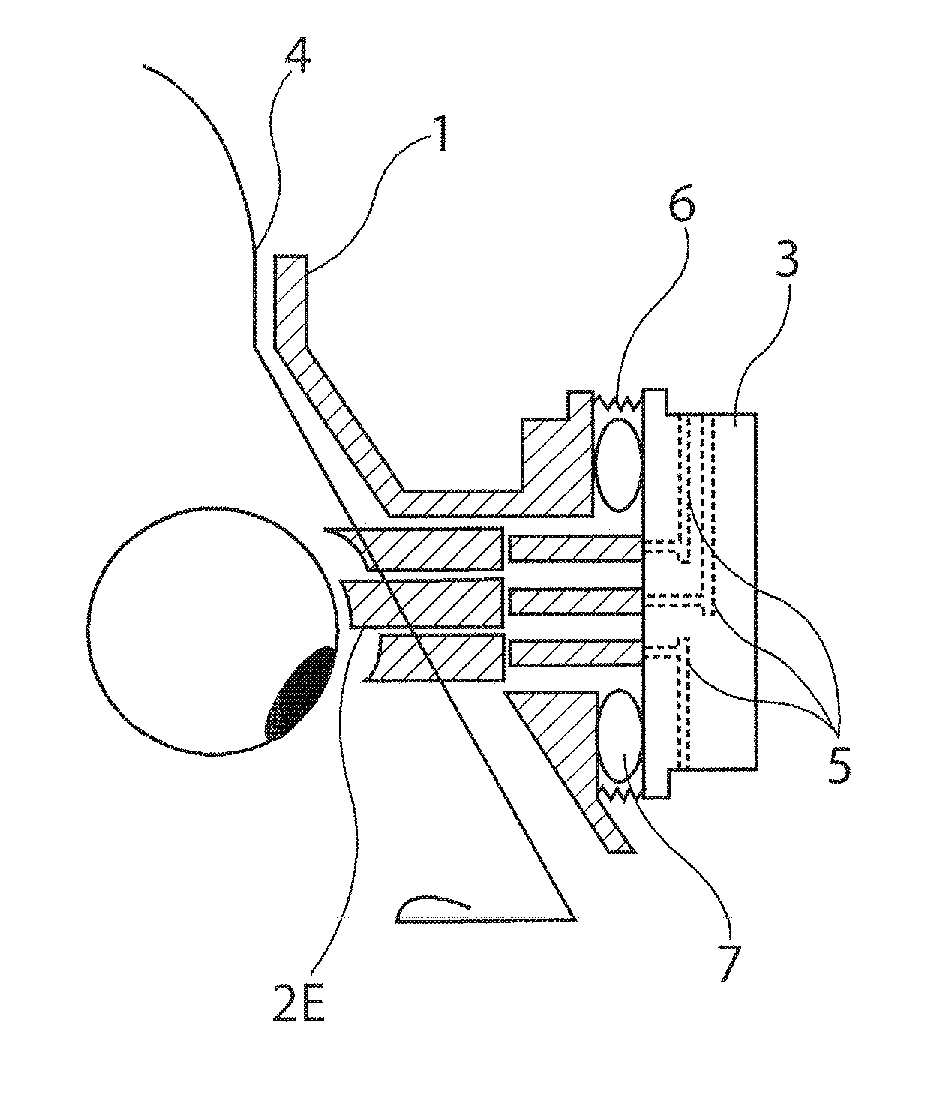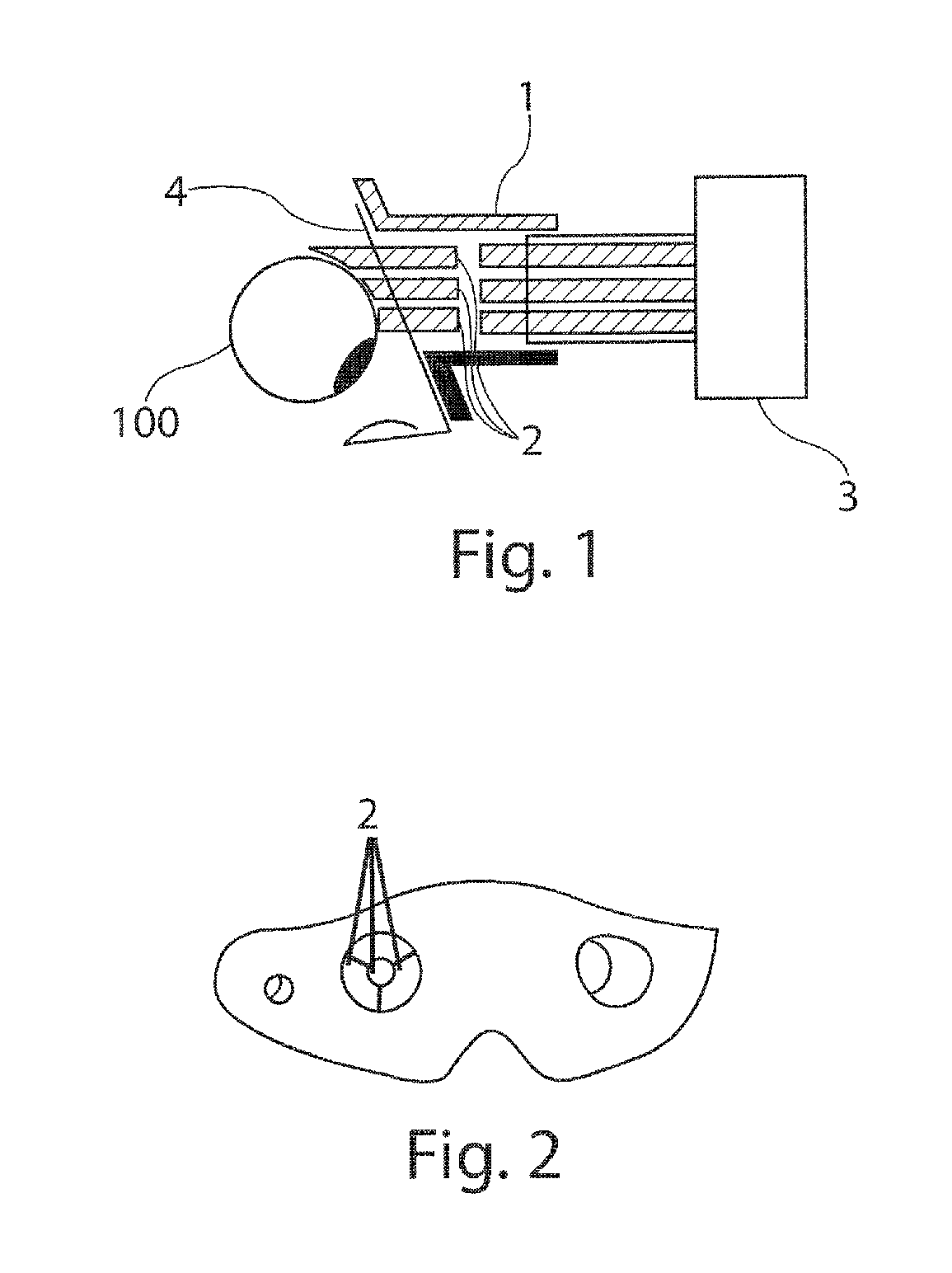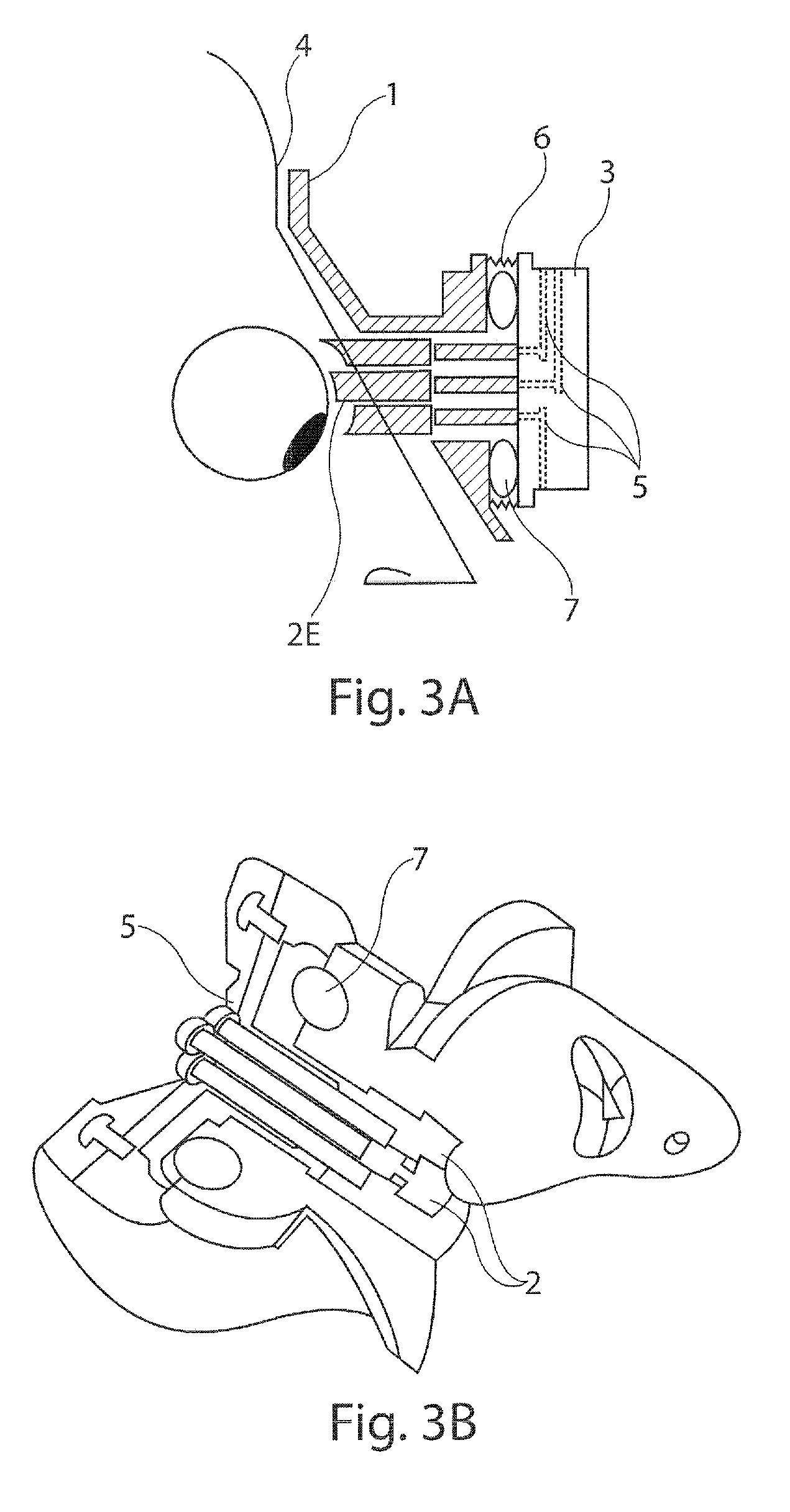Contoured facial mask with multiple contact probes for use with tactile tonometer
- Summary
- Abstract
- Description
- Claims
- Application Information
AI Technical Summary
Benefits of technology
Problems solved by technology
Method used
Image
Examples
example 1
Design of Manual Indentation Rate-Controlling Apparatus Advancement Mechanism for Controlled Indentation Rate
[0101]As described in this invention, a manually controlled indentation mechanism can be designed to provide the required indentation rate control for the tactile tonometer. As illustrated in FIG. 5, when cap 9 is compressed by a distance H, the resulting spring force is F0=KSH. This force compresses the visco-elastic spacer 10, which is can be a donut-shaped open-cell polyurethane foam. Open cell-polyurethane foams can be described by a three-parameter Maxwell viscoelastic bodies [4]. A wide variety of visco-elastic foams, also known as shape-memory foams, are available on the market including Sorbothane, polynorbornene, Noene, Astro-sorb, and Neoprene.
[0102]By selecting a visco-elastic member with viscoelastic material constants K1 [units N / m], K2 [units N / m], and C [units N-s / m], it can be shown that the mechanical model depicted in FIG. 5B will result in exponential time-...
example 2
Calibration of Tactile Tonometer Using Multiple Probes and a Single IOP Value
[0109]In clinical practice, it is anticipated that each human subject will have a different eye size, with variable eyelid thickness and elasticity. Therefore, tactile tonometers will need a calibration against an independent measurement of the IOP. Since in practice the eye pressure of a human subject cannot be adjusted at will, it is advantageous to be able to calibrate the unit from a single known value of the IOP. The following example illustrates how data from several force probes can be used to determine the calibration coefficients of each from a single measurement.
[0110]As described in this invention, when forces from two probes are plotted against each other, the resulting curve exhibits a sharp change of slope at a point determined by Eq. (7). FIG. 11 shows FE verses FR and illustrates the location of this point labeled by FE10-35c for pressure levels p=10, 15, 20, 25, 30 and 35 mmHg.
[0111]When tw...
example 3
Fabrication of Contoured Facial Masks
[0116]Fabricating of contoured masks conforming to the facial anatomy of a subject can be accomplished by first scanning the face using commercial laser or optical 3D scanner.
[0117]A mask with embedded probes can then be printed using stereo-lithography (3D printing as illustrated in FIG. 2. Alternatively, a mask may be custom fitted to an individual using a plurality of built-in inflatable air bags shown in phantom at 120 in FIG. 3C.
[0118]A pneumatically driven tactile mask is shown in FIG. 3A-C.
[0119]As will readily be appreciated by one having ordinary skill in the art, the present invention provides numerous advantages over hand-held tactile tonometers and methods for measuring IOP. Among the advantages are the following:
[0120]The contoured facial mask and its components improves the repeatability of the measurements and reduces alignment errors.
[0121]The contoured facial mask and its components aids the user in self-administering IOP measure...
PUM
 Login to View More
Login to View More Abstract
Description
Claims
Application Information
 Login to View More
Login to View More - R&D
- Intellectual Property
- Life Sciences
- Materials
- Tech Scout
- Unparalleled Data Quality
- Higher Quality Content
- 60% Fewer Hallucinations
Browse by: Latest US Patents, China's latest patents, Technical Efficacy Thesaurus, Application Domain, Technology Topic, Popular Technical Reports.
© 2025 PatSnap. All rights reserved.Legal|Privacy policy|Modern Slavery Act Transparency Statement|Sitemap|About US| Contact US: help@patsnap.com



